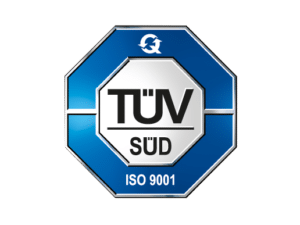Menu
Menu
Close
✓ With electric heat mats
✓ exactly where you need the heat
✓ Precisely controllable for even iron removal.
Heat as an environmentally friendly de-icing process is becoming increasingly important in anti-icing and de-icing processes. Especially in aviation and other areas where safety and efficiency in icy conditions are crucial, heated elements offer an innovative solution.
This technology really comes into its own when it comes to environmental compatibility. Rely on heat instead of glycol-based fluids and reduce your environmental impact.
For the electrical heating elements for anti-icing and de-icing, we embroider fine wires as heating conductors onto various carrier materials.
They integrate the heating elements into the surfaces to be protected, such as the wings of airplanes or industrial components.
As soon as an electrical voltage is applied to these wires, they generate heat that effectively prevents the formation of ice (anti-icing) or melts ice that has already formed (de-icing).
No matter what challenge you are currently facing with your product or component, let us work together to find a way to achieve effective and sustainable freedom from ice.

Anti-icing includes preventive measures that prevent the formation of ice on surfaces. This is particularly important in environments where ice formation can affect safety or efficiency, such as in aviation, road traffic, rail vehicles and the maritime industry.
Anti-icing technologies also play an important role in energy generation and in residential buildings. Efficient anti-icing systems help to reduce downtime and repairs, while also contributing to the safety and longevity of systems and structures.

De-icing involves the removal of ice that has already formed if preventive measures are not sufficient or have not been applied. This is necessary, for example, if aircraft have spent long periods on the ground in cold climates.
One of the biggest challenges when de-icing is to remove the ice cream completely without damaging the surface. Electric heating elements are an effective and gentle method of removing iron.
Get in touch with us! We look forward to your idea or challenge!
Transform heat mats into heating systems with multi-stage switches, variable controllers or thermostats. They are suitable for mobile use with battery operation and stationary use with mains operation (12 or 24 V). With your logo and design on request.
Use carbon fibers as heat conductors for heat transfer in carbon heat mats. They are light, thin, highly flexible and flame-retardant. They generate heat particularly quickly and distribute it evenly across the heating element without hotspots.
Use heat mats with carbon heating conductors in your infrared heating system. They quickly generate a homogeneous and very pleasant heat and can be easily integrated into your infrared heating system for a variety of domestic, commercial and industrial applications.

